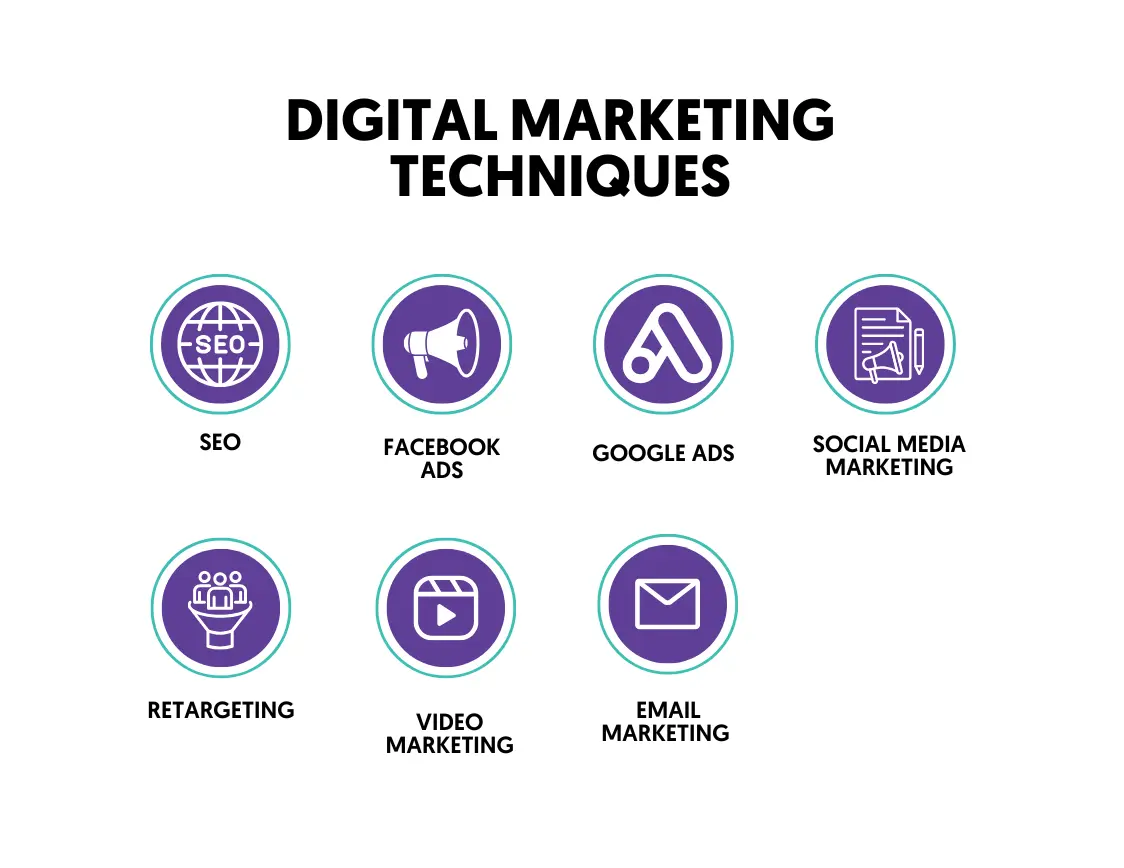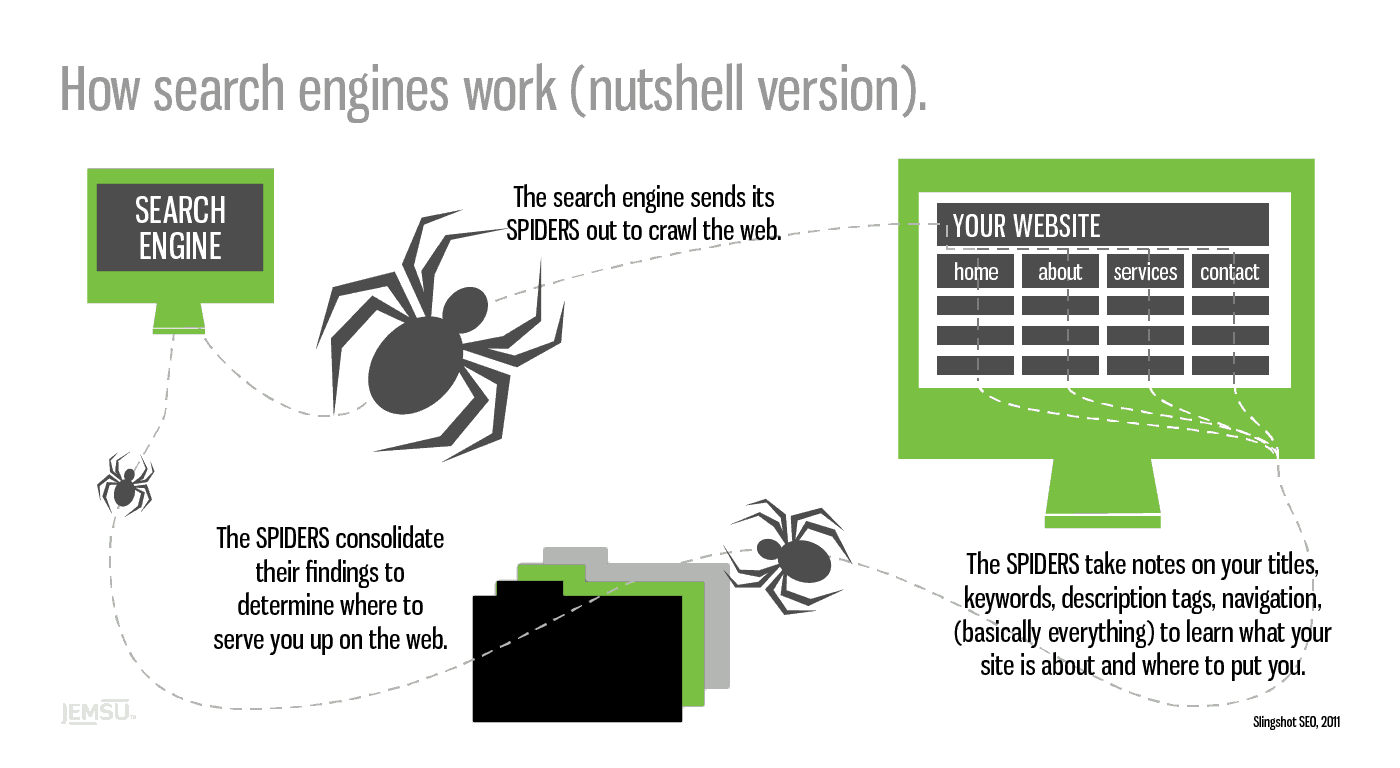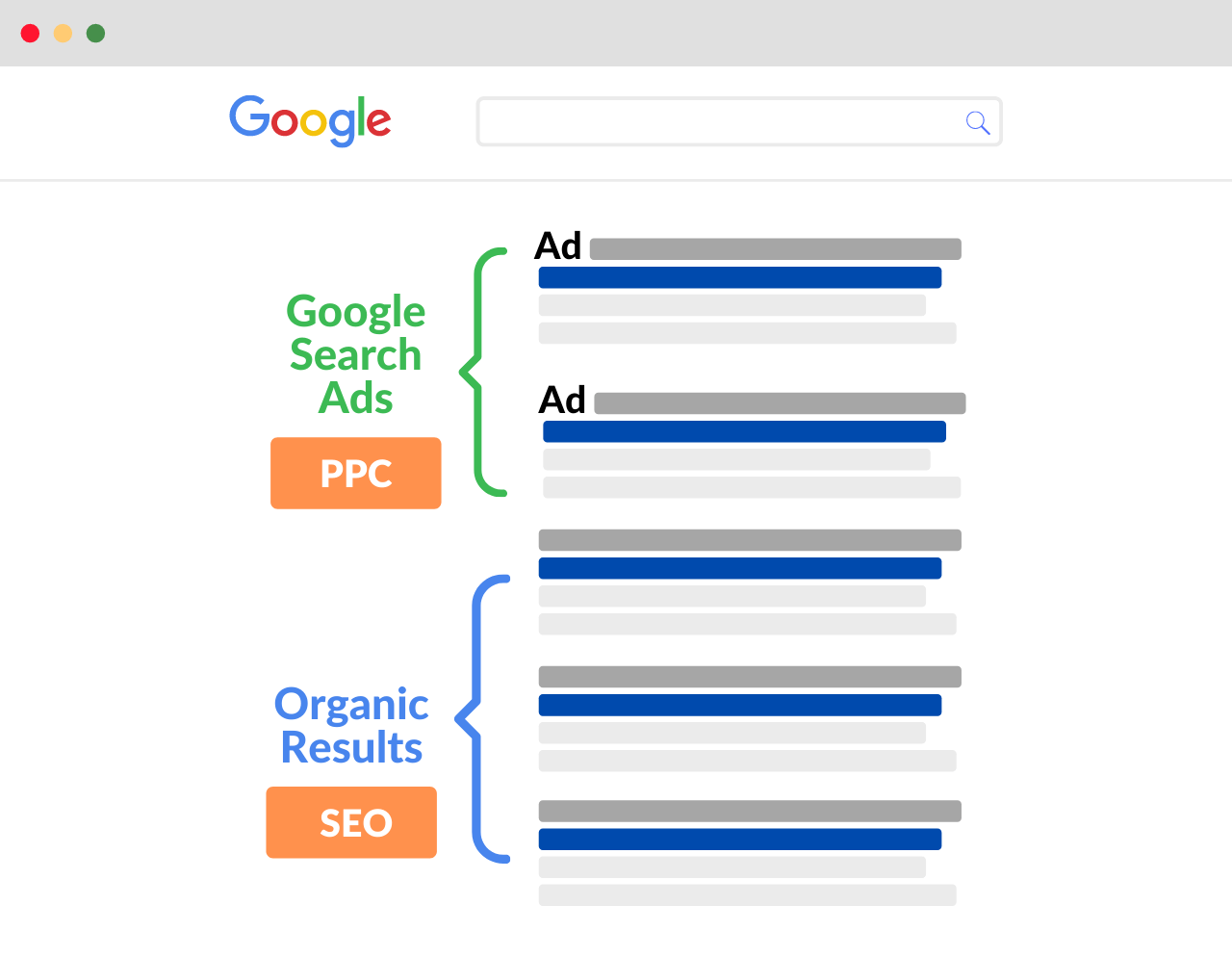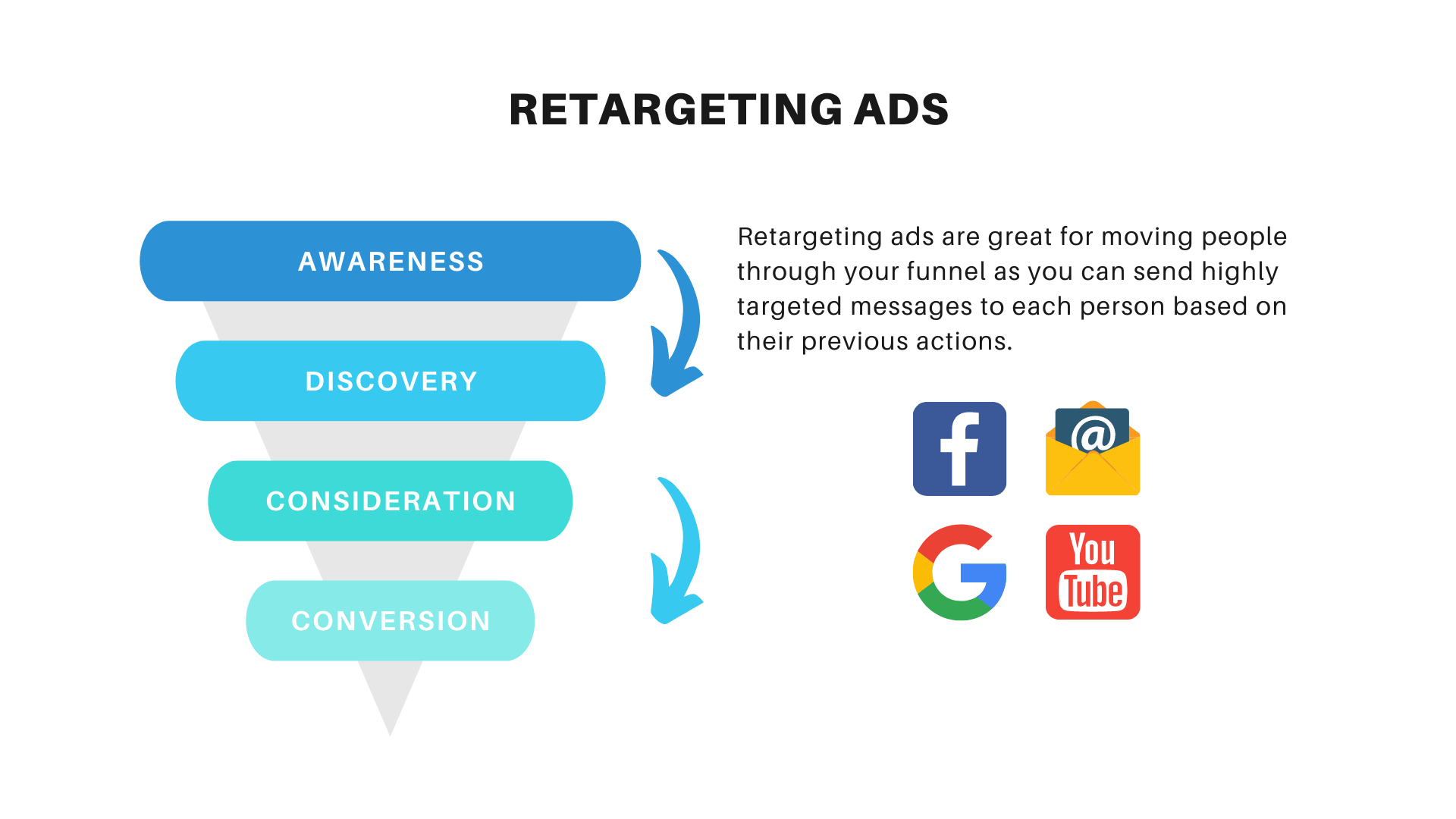The internet opens the door for all sorts of marketing. From advertisements to engaging with customers on social media, there are many ways to use digital marketing to connect with your audience.
In this post, we’ll walk through the best digital marketing techniques and how you can use them to grow your business.

1. SEO (Search Engine Optimization)
Search engine optimization is the digital marketing technique of optimizing your website to attract visitors from search engines. It is an essential part of any digital marketing strategy.
It is so important because it is the single largest source of web traffic among all digital marketing channels.
Google, the world’s biggest search engine, is also the most visited website. The search engine allows people to easily find information on pretty much anything they can think of, and because of this, the site gets billions of searches each day.
So, whether you sell physical products, provide services, or produce blog content, the platform helps you reach your target audience.
SEO is the process that allows you to tap into this valuable source of web traffic.
With SEO, you can get your pages to the top of the search rankings to maximize the visitors you can attract.
How search engines work
So how do engines work and how can you get your pages to appear before your target audience?
A search engine's function has three primary components: crawling, indexing, and ranking the results.

Crawling is the process search engines use to discover web pages across the internet. It works by sending bots known as crawlers across the web to find new pages.
When a crawler finds new pages, it adds them to the search engine’s index. The index is a big library of sites and pages that the search engine can pull from when providing results.
Keep in mind that not every crawled page will be indexed. There are several ways website owners can tell the search engine not to index a page. This is common for pages that could hurt SEO or not get a lot of traffic.
Ranking factors
Search engines look to provide users with the most valuable answers to their questions.
They determine which pages best fit with an algorithm with many ranking factors.
While not all the details of the algorithm are known, many ranking factors are known to be important in SEO. Below are a few of the most impactful SEO ranking factors.
High-quality content - Search engines look for content that provides valuable information. Remember that the search engine aims to provide users with the best answers to their questions. So the simplest way to get your site to the top of search results is to create comprehensive pages that answer your audience’s questions.
Crawlability - Crawlability refers to how easy it is for search crawlers to move through your site. This is an important factor because search engines need the ability to find and understand your pages to earn strong rankings.
Technical SEO factors - There are also a variety of technical website factors that influence SEO performance. Chief among them is website speed. Fast websites create a good user experience, which search engines view as a high priority.
Other significant technical factors include mobile-friendliness and security. These are also a big part of a great user experience and a must if you want your pages to rank.
Off-page factors - Off-page SEO factors are elements that aren’t actually on your website but still impact SEO. The most important off-page factor is backlinks, links from other websites that point back to your pages. Backlinks indicate authority and quality. As such, Google prioritizes pages and sites with many high-quality links.
Keyword research - Keyword research is the backbone of any SEO strategy. It is the process of finding the keywords people use to find your site. Once you gather keywords, you’ll know what pages to create and how to optimize those pages for the target search term.
There are many ways to perform keyword research. The most basic method is to start typing a search into Google to see what results appear in the autocomplete feature. You can also review the bottom of the results page to find a list of related terms.
More advanced methods of keyword research involve using dedicated keyword research tools. These platforms have a database of the search terms used in Google. With them, you can see how often particular keywords are searched and how difficult it is to rank for each term.
2. Google Search Ads
SEO isn’t the only effective digital marketing technique that involves search engines. You can also run paid ads with Google to accompany your SEO efforts.
Google search ads are simple text-based ads. They look more or less identical to organic search results. Search ads are a powerful way to bring quality traffic to your site. They allow you to get to the top of the results without waiting for your pages to rank.

How Google Search Ads work
Google Ads are pay-per-click (PPC) advertisements. This means that you only pay when someone clicks on the ad. They also offer pay-per-impression advertising, which means you pay every time your ad is shown to a searcher.
Google Ads uses a bidding system. When you create a search ads campaign, you set a maximum bid that you want to pay for each ad click. The higher you bid, the better your chances of your ad showing at the top of search results.
There are only a few slots for displaying ads, so Google will show the ads with the highest bids.
Quality Score is another factor that determines the placement of your ads. The metric is based on the relevance of your landing page and how well your ad copy generates click-throughs.
Google Search Ads keywords
Keyword research is as essential for Search Ads as organic search results. The keywords that you add to your campaign will determine which searches your ads will appear for.
In addition to the keywords themselves, Google lets you set a match type for the terms you add to your campaign.
These match types specify how well a searcher’s query needs to match your selected keyword.
With a broad match type, your ad will be eligible to show for any search that broadly matches your keyword, even if it contains extra words or if the words are in a different order.
For example, if you add a broad-match keyword for “men’s shirt,” your ad will be eligible to display for a search like “black t-shirt for men.”
You can use exact match when you want to be more targeted with your keywords. This will ensure that your ads only appear for the exact search terms added to your campaign.
How you approach keyword targeting will play a big role in the success of your campaigns. Avoid overly broad and irrelevant terms, as you’ll waste your budget showing your ads to people uninterested in your business.
- Google Ads Course - A complete course on how to run successful campaigns on Google Ads.
- Google Ads Courses - a list of the best courses to master the secrets of Google Ads.
3. Facebook Paid Ads
Facebook is one of the most valuable digital marketing platforms. It has a large audience base and powerful paid and organic marketing options.
Facebook Ads, in particular, are highly effective as they enable you to use very precise targeting with your campaigns. The platform has a lot of data on users, and you can use this to look for specific qualities in the people who are shown your ads.
You can target people based on demographics such as age, gender, location, and education. You can also target based on interests and behaviors. Facebook can tell what people are into based on the types of content they interact with on the platform.
Facebook Ad types
Another reason Facebook Ads are one of the best digital marketing techniques is the diverse range of ad formats available.
This lets you create ads optimized for all kinds of scenarios. Below you can see some of the most effective types of Facebook Ads:
Image ads - As the name suggests, image ads are simple ads that contain an image, a call to action, and a link.
Video ads - Video ads are similar to Image ads but contain a photo instead of a video. Video ads can appear in Stories or in your audience’s News Feed.
Carousel ads - This ad format lets you display up to 10 images and videos in a carousel that viewers can click through. These ads are practical when you want to showcase multiple items or highlight the different features of a single product.
Lead ads - Lead ads are another ad format available only on mobile devices. When customers click a lead ad, they are taken to a sign-up form where you can quickly add them to your email list.
Dynamic ads - Dynamic ads let you send personalized advertisements to people based on their behavior. For example, you can set up a dynamic ad campaign to showcase products that someone previously viewed but did not purchase. Dynamic ads require the Facebook pixel.
4. Retargeting Campaigns
Even with the most effective digital marketing strategies, it is rare to turn visitors into customers upon first contact.
It often takes multiple interactions with your business before many people become buyers. Because of this, it is essential to have ways to get your business back in front of prior visitors.

Retargeting is a marketing technique that targets these people specifically to bring them back to your site.
There are two ways in which retargeting can work.
The first is pixel-based retargeting. With this form of retargeting, the advertising platform stores information on previous visitors via a tracking pixel.
You can then use these details to send targeted ads to that audience.
Facebook dynamic ads are the best example of pixel-based retargeting ads. Google is another good example as you can retarget previous site visitors using ads in the Google Display Network.
The other type of retargeting is list-based retargeting. It allows you to use a list of existing contacts to decide who to target in your campaign.
This list is usually a record of contacts and their email addresses. When you upload this list to a platform like Facebook, they will then match the emails to users and then serve them your retargeting ads.
Retargeting vs remarketing
Retargeting isn’t the only digital marketing technique for re-engaging members of your audience. There is also remarketing. While the two are often conflated, there are some important differences between them.
The main difference is that remarketing focuses on re-engaging past buyers, while retargeting focuses on people who have visited your site or social profiles but have not become customers yet.
Retargeting is typically done through advertisements while remarketing primarily uses email to reach your audience.
5. Email Marketing
Email marketing is a well-established digital marketing technique. It involves building a list of email addresses and sending targeted messages to those subscribers.
These messages can contain information about new products, promotions, or informative content, intended to educate your audience on the value of your business while keeping them engaged between purchases.
Email is effective because it allows you to communicate directly with your audience. Many people are more responsive to email messages, and you can use this to build a connection with them.
Another great thing about email marketing is that it lets you be precise with who receives what messages.
With email marketing software, you can easily create audience segments to ensure everyone receives the messages that are most relevant to them.
For example, if you wanted to remarket to past customers, you can create an audience segment that only includes people who have purchased.
Types of emails for digital marketing
Here are some of the most common types of email marketing campaigns:
Newsletter emails - Newsletter emails are a widely popular form of email marketing. With them, you send regular communications to your subscribers updating them on your products and services.
Lead nurturing emails - Lead nurturing emails are designed to move prospects through your marketing funnel. These messages help people learn more about your business while increasing interest until they eventually become customers.
Promotional emails - Promotional emails make your audience aware of your products and services.
Confirmation emails - are sent out after specific events, like someone placing an order or signing up for an email list. While their primary purpose is to provide essential information, they can also be used to market your business.
List Building - List building is an essential part of email marketing. Simply put, you can’t send email campaigns if you don’t have anyone to send them to.
It’s also key to getting the right people on your list. Otherwise, your messages will sit in your recipients’ email inboxes unopened. Adding an opt-in form to your website is the most common approach to building an email list. Because most people won’t simply sign up for nothing in return, many businesses choose to give something away for free in exchange for providing an email address.
These gifts are known as lead magnets. A lead magnet could be an ebook, a webinar, a checklist, or a promotional code.
6. Social Media Marketing
Social media marketing is a digital marketing technique using social media platforms to reach and engage your target audience.
Social platforms allow you to communicate directly with your followers while establishing a unique persona for your business.
This helps you grow brand awareness and drive traffic back to your website.
With social media marketing, monitoring your channels to see who is interacting with your business is essential.
By responding to comments, liking, and sharing other content, you can build a community that strengthens your connection with your audience.
Selecting social media platforms
The best social media platform for your business will depend on your business. Each platform has a unique audience base. For instance, LinkedIn consists mainly of professionals, while TikTok is more prevalent among younger users.
So, when creating a social media strategy, it’s essential to determine which platforms can provide your business with the most value. You can always branch out into more platforms as your social presence grows.
Tracking social media marketing
As social media marketing can be used to achieve a variety of objectives, there are also numerous ways to track how well your marketing is working.
Below are some common social media metrics to monitor your success:
Reach - Reach measures how many people contact your social media channels. It is a good metric to track if you’re trying to grow brand awareness.
Followers - This metric simply shows the number of followers your profiles have. It is also a good indicator of how well you’re reaching and connecting with your target audience.
Engagement - Engagement measures how often people like, comment, and send you direct messages. It is good for showing the quality of interactions with your audience and whether you’re creating a strong connection.
7. Video Marketing
Video marketing is a marketing technique that uses videos to connect with your audience and teach them about your business.
Video is a highly effective tool, and it is more accessible than ever. It is no longer difficult or expensive to create a high-quality video. You can even make an awesome video using your smartphone.
Video is versatile because it can be used on various platforms, including your own website and advertisements.
However, YouTube is the best platform for video marketing. It receives more searches than any other site besides Google.
You can use YouTube videos to provide value to your audience while informing them of your products and services.
When you use YouTube for video marketing, you need to implement many of the same SEO tactics you would for Google search.
This includes researching the keywords your audience uses to discover content and then optimizing your videos to rank highly for those keywords.
Because making videos takes some time, it’s important to have a clear idea of what you want to communicate, who you want to reach, and the best platform to do it on.
Types of marketing videos
Here are some of the best videos to use for digital marketing.
Demo and explainer videos - Demo videos showcase how your product or service works and how it can help your customers. This could involve testing out a physical item or walking through the software's main features.
Educational videos - Educational videos let you instruct your audience on a particular topic. This type of content helps provide value that will ultimately build a connection with your viewers.
Testimonial videos - Testimonial videos are a powerful form of social proof. With them, you can describe a past buyer's experience to show new viewers how they can also benefit from your business.
Conclusion
You now know the top digital marketing techniques. The great thing about the methods on this list is that they complement each other very well.
By implementing the techniques best suited to your needs, you can create a robust marketing strategy to reach more people and grow your business.



